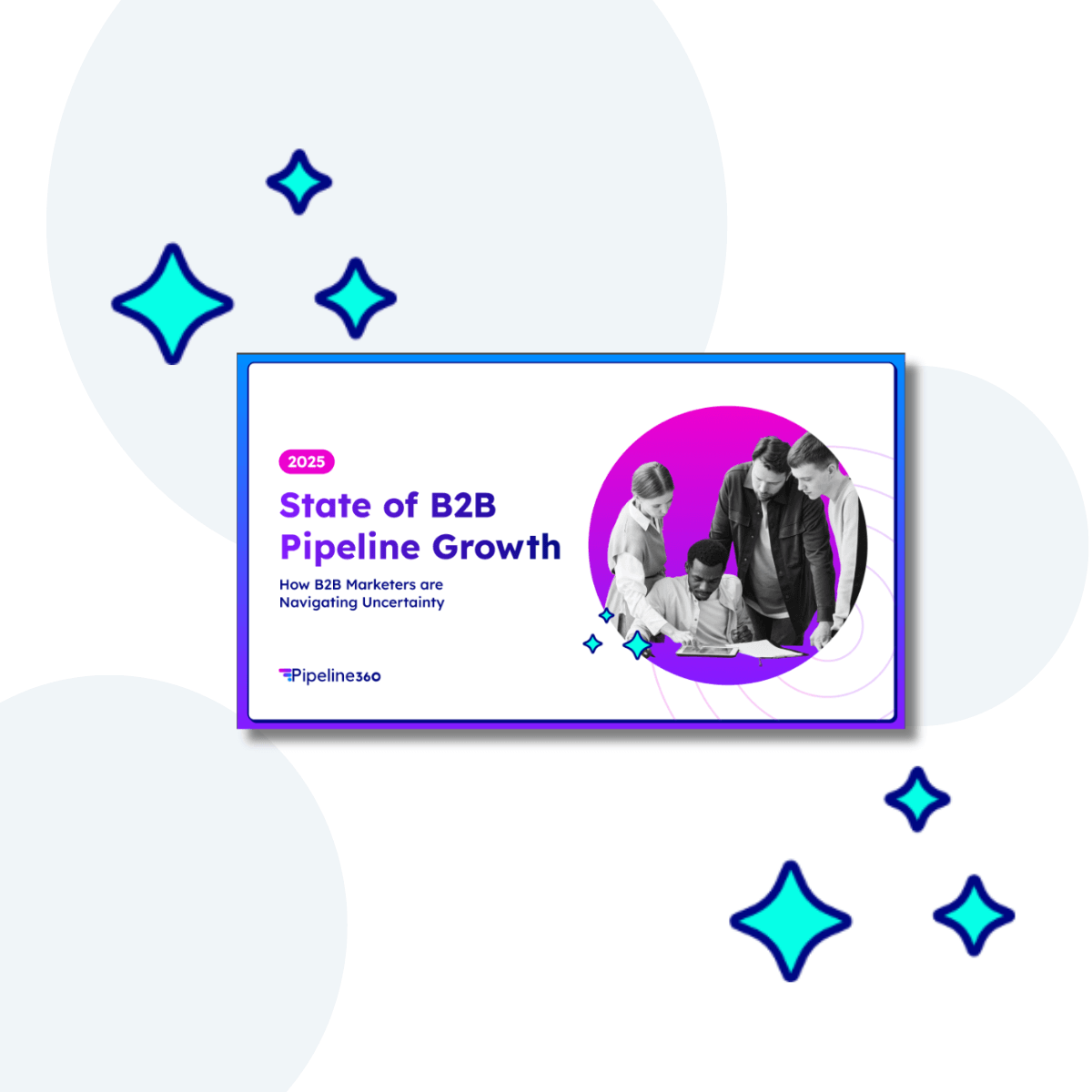As B2B marketing and sales organizations prioritize account-based revenue strategies, traditional inbound tactics alone can’t provide the quantity or quality of decision-makers to convert target accounts. You simply can’t wait for prospects to find your website through inbound marketing tactics – it won’t scale quickly enough to hit goals. That’s where 3rd-party demand generation and content syndication come in.
Unfortunately, 3rd-party programs can be incredibly time-consuming and frustrating to manage without the right tools, making it very tempting to take shortcuts or “guess” instead of dedicating the time required to properly plan, launch, measure, and evolve content syndication programs. Does the phrase “We have to move quickly” sound familiar?
Here’s a list of the 10 most-common content syndication mistakes we see our customers make, as well as some guidance on how to get it right.
1. Neglecting the importance of lead source/partner/publisher selection
Not all publishers are created equal, and it takes some work to find partners that will work for you. It’s important to ask a lot of questions, such as:
- What verticals, job titles, geos and asset types are their strength?
- What channels and methods do they use to promote content? (E.g., Do they just blast an email database or do they use “intent” and other intelligence data to identify the right people to distribute to?)
- What are their policies on POCs (proof of concepts)? Delivery windows? Returns?
- Do they meet your data-privacy and transfer requirements?
2. Putting all your eggs in one basket
Managing multiple publishers can be a daunting and time-consuming task. It can seem like there’s never any economies of scale. Every publisher you add means more time and confusion, which drives many marketers to drastically limit the number of partners they work with. They find a couple that work and then stick with them for years.
There are a couple of problems with this:
- First, even if the partner has the best reputation and continues to provide quality contact data, eventually the well is going to run dry, even for the biggest publishers.
- Second, your buyer personas and ideal customer profile is likely to evolve and expand over the years. Not updating your partners to reach these new audiences would be a huge (and costly) mistake.
3. Distributing product-focused content
Do I really have to say this? Save the stuff that talks about your product for your own website, or later in the nurture game. The goal of content syndication is to identify new prospects who haven’t heard of you but are researching a problem you might be able to solve for. So, serve them up some helpful information and tools first before you start selling them your stuff.
Learn more about content syndication done right – grab a copy of Integrate’s resource: “Getting Started with 3rd-Party Demand Gen: A Guide to Scaling Revenue.”
4. Using analyst reports too early
Everyone loves a good analyst report. Or benchmark report. Or rankings list. But that’s the problem: everyone loves them, regardless of whether they’re in a buying cycle for your product. Invest in these reports, but don’t give them away via content syndication programs. Instead, start with an awareness piece that will attract potential buyers for your product. Once you’ve nurtured them to be familiar with your product, that’s the time to deliver the analyst report to show accreditation for your solution.
5. Not having enough content (or not making good use of the content you already have)
Have a beautiful, thick new piece of awareness content that your content team is eager to get “in market”? Awesome news. Now chop it up.
I don’t mean get rid of it, but rather determine ways you can revise it into other, smaller pieces of content. Turn a white paper into an infographic, a checklist, a stats sheet and a blog post. Bonus points for video or engaging social content! …and you can still use the original white paper version too!
Then, work with your publishers to determine which of these smaller pieces will resonate best with their audience. Some will say the full white paper, but many will suggest a combo of the stats sheet, infographic and video. Listen to them, but also measure and optimize based on your own data.
Different buyers prefer different information formats and have preset expectations for the formats they’ll encounter in each place they go for information. Cater to that, while also getting more juice from all your big content investments.
6. Sending leads right to sales or BDRs
3rd-party demand gen provides an introduction to potential buyers, but it’s not an indicator that someone is ready to speak with a sales person. Have a plan to nurture the contacts you receive from your 3rd-party programs before letting the BDR team jump all over them.
7. Not leveraging BDRs in nurture efforts
I know I just cautioned about sending leads right to sales, and now I’m telling you to send them to sales? Hang with me here. Traditional BDR tactics like calling and email blasting to “book a meeting ASAP” are not the right approach. Instead, marketing should provide BDRs with scripts and cadence coaching for 3rd-party demand follow up. A mix of email, social and phone can be used here, and the tone should be helpful and personalized – making deposits before taking withdrawals (asking for meetings).
8. Not monitoring your programs closely
3rd-party demand gen is not a set-it-and-forget-it effort. Like any of your marketing efforts, testing, measurement and regular optimization should be the rule. Watch for underperforming assets or sources that should be replaced with higher-performing ones, and make the swap quickly after identifying a problem. A word of caution – if you notice an asset drastically underperforming, first confirm that the publisher is actually distributing that particular asset. It’s possible they forgot to set one of your assets live or they may be unable to support the number of assets you gave them. Don’t write off a good asset when the publisher is really the problem!
If you’re able to take a longer-term look (thanks to having closed loop reporting), evaluate sources not just on “lead quality” but on how many opportunities were ultimately driven as a result of that source. Deal velocity by source is another great metric, if you can get it.
9. Running short-term campaigns instead of developing an always-on strategy
Do you only eat when you’re absolutely starving? Hopefully you’re regularly fueling your body to keep it primed and operating at a high level. Same goes for your demand engine – you should be continually filling the top of the funnel to keep the rest of the pipeline operating at maximum capacity.
Plus, you never know when your potential buyers are in a buying cycle. Sure, you can guess based on fiscal calendars, but what if a new leader comes in to shake things up out of cycle, or an acquisition happens? Point is, if your 3rd-party demand engine is always running, it will catch those buyers whenever it is they’re looking for a solution.
10. Not leveraging modern data and tech to be smarter and more efficient
Many incredibly helpful data types and tech systems are available to support your content syndication programs and 3rd-party demand gen strategies. Some of them even help you sidestep the above mistakes – so it’s wise to look into how they may help your specific goals and programs. Here’s a list of the 4 of the big ones:
- Intent data gives you the ability to more precisely target accounts that are in buying cycles or showing interest.
- Traditional and retargeting display tools help you surround all the potential buyers at accounts, not just the one person you reached via your syndicated content.
- Demand orchestration software centralizes myriad 3rd-party contact data sources while automating all the manual processes associated with managing those sources and programs, and ensuring the quality of all the data they generate.
- ABM tools help you more precisely reach entire buying committees.
Content syndication isn’t easy, but with the right knowledge, strategy and technology, it’s an effective strategy to quickly scale pipeline and meet your revenue goals.
If you want to learn more about how to do content syndication or other types of 3rd-party demand generation the right way (efficiently and effectively), download Integrate’s new guide: “Getting Started with 3rd-Party Demand Gen: A Guide to Scaling Revenue.”





